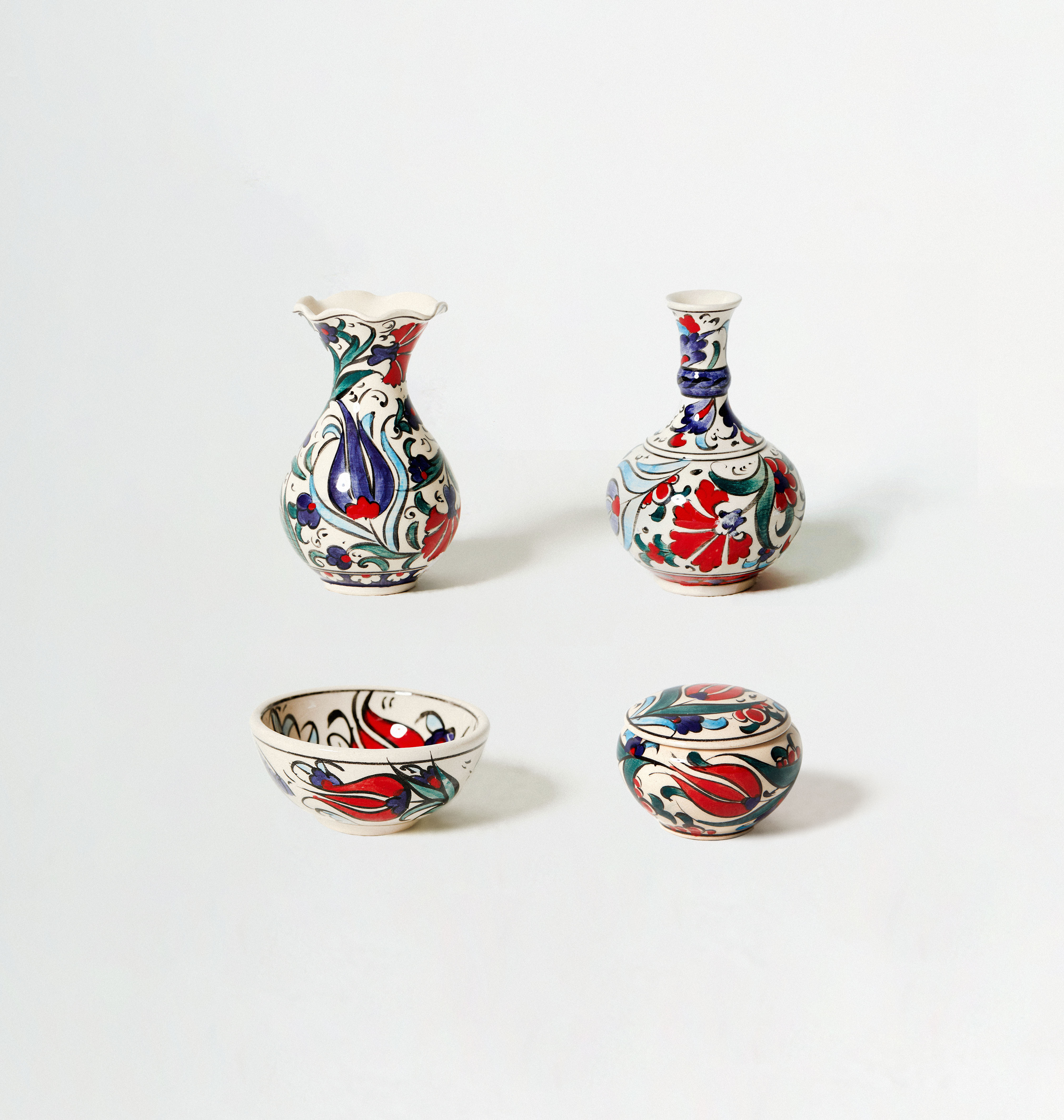Çini, Turkish Tiles
2020 -
Individual Research Project
This project is a research endeavor that explores
the rich history and intricate artistry of the ceramic
art of Iznik tiles, which originated in the Ottoman
Empire. This personal research process, initiated to
learn the traditional techniques of Iznik tile making,
aims to gain a detailed understanding of this art
form known for its vibrant colors, intricate patterns,
and fascinating motifs. In light of the knowledge
gained, the development of practice was supported
by focusing on hand painting, glazing, and firing
skills. The project traces the historical evolution of
Iznik tiles to their peak during the Ottoman Empire,
examining the changes the art has undergone and
the cultural significance of these changes. The study
explores the symbolism and cultural significance of
the tiles by investigating their application in a variety
of contexts, from mosques and palaces to objects
of daily use. This exploration broadens the personal
understanding of architectural design by revealing
the narrative power and emotional impact of the
material. Analyzing the characteristic features of
Iznik tiles, geometric patterns, and floral motifs with
their mathematical precision, this study examined
the interaction of art with geometry and the
integration of various patterns into contemporary
architectural designs. This project has resulted in a
series of products hand-painted with Iznik tiles, but
this is only one stage of a journey. Transcending the
historical context of Iznik tiles, this project represents
the beginning of a new process of research and
experimentation that has the potential to elucidate
and enrich contemporary architectural spaces. In
this context, further research and experimentation
are planned, focusing on the timelessness and
representation of Iznik tiles and aiming to establish
a new narrative-based experience space at the
intersection of history, art, and innovation.
![]()
Figure 1.
Tile with tree of life, 30x30 cm.
![]()
Figure 2.
Tiles with tulips and carnations design


